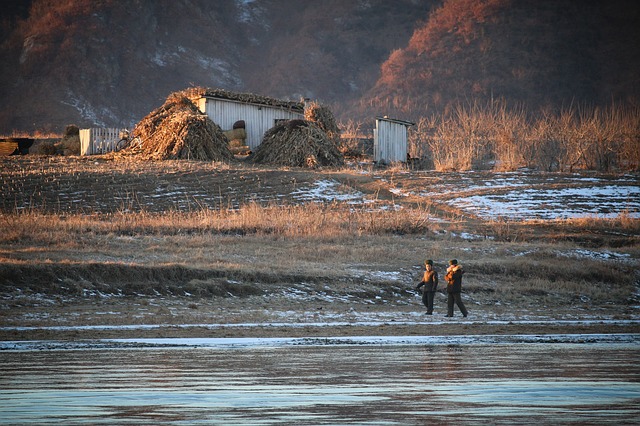Famine in North Korea

North Korea is known as one of the world’s most economically isolated countries. According to the CIA’s World Factbook, North Korea’s Gross Domestic Product (GDP) was only $40 billion in 2015. North Korea also has an extremely negative track record of famine. The 1990s famine in North Korea is estimated to have killed between up to 1 million people from 1995 to 2000.
How Did North Korea Get to This Point?
After the conclusion of World War II, Korea was split between the Soviet Union and the United States along parallel 38. In 1950, the Korean War began after communist North Korea invaded democratic South Korea. The war went on until 1953 and ended in a stalemate. Ever since the Korean War, North and South Korea have been divided at the Demilitarized Zone (DMZ), and the two countries have still not signed an official peace agreement to date.
North Korea’s communist regime has committed numerous human rights violations and threatened the United States, Japan and South Korea with a war on a frequent basis. As a result, the United Nations and the United States have placed significant sanctions on North Korea that have seriously reduced economic growth in the country. In fact, North Korea’s economic situation is so poor that many experts believe that, without China as North Korea’s major ally and trading partner, the country would not be able to sustain itself.
There have been past attempts to negotiate with North Korea, particularly regarding their nuclear weapons program. In June 2018, President Trump became the first United States President to meet with North Korea’s tyrannical regime, headed by Kim Jong Un. While President Trump is attempting to negotiate with North Korea, there has not been any significant progress made so far regarding diplomacy. However, President Trump temporarily succeeded in stopping Kim Jung Un from testing ballistic missiles (as many as 12 tests were conducted in 2019) and was also able to negotiate bringing home the remains of 55 American soldiers who died during the Korean War.
Why Does North Korea Have Problems With Famine?
Since North Korea’s annual GDP is low, monetary resources are tight. Unfortunately, the Regime uses nearly 25 percent of its GDP towards military funding. It does not invest as much in basic services such as healthcare, clean water, roads and food. On top of that, North Korea is a rather small country with nearly 24 million people. Its land area is estimated to be the size of Mississippi. Most of the northern areas are mountainous, which makes agriculture very difficult.
The devastating 1990s famine in North Korea was caused by a variety of factors. Besides the major problems discussed above, an excess of floods brought on by El Nino in 1995 and 1996 caused devastation in North Korea. This devastated crops and destroyed already limited farmland. As grain resources decreased, the government reduced the supply to its people in order to preserve food resources for itself and the military.
Are Conditions in North Korea Improving?
Conditions in North Korea are very difficult to gauge because the country is extremely selective regarding who is allowed in and out of the country. Therefore, data is limited. However, most experts agree that famine in North Korea has not improved very much. While North Korea’s GDP is slowly growing at approximately 4 percent, there were still 1,137 defectors in 2018. Twenty percent of North Korea’s children are thought to be stunted, and 40 percent of North Korean residents are malnourished. All of these factors are signs that conditions are still poor throughout the country.
On a positive note, domestic agriculture has improved greatly. Grain production has almost doubled from the 1990s to about 5 million tons per year. Humanitarian aid to North Korea is now supplying nearly 30 percent of the country’s food supply. In 2016, the United Nations spent at least $8 million in foreign aid to help reduce malnutrition. In the meantime, North Korea’s upper class, which largely consists of government officials and military generals, has plentiful access to food. This is largely because they all live in North Korea’s capital, Pyongyang. Unfortunately, smuggled photos out of North Korea show small villages with residents starving, and in extreme cases, eating grass.
Nearly half of North Korea’s population still lives in poverty. Human rights violations are common, and the military is considered a priority over infrastructure and agricultural production. Until North Korea develops normalized relations with the rest of the world and commits more resources to its people, it is highly doubtful that any major breakthrough against famine or poverty will be possible.
– Kyle Arendas
Photo: Pixabay
